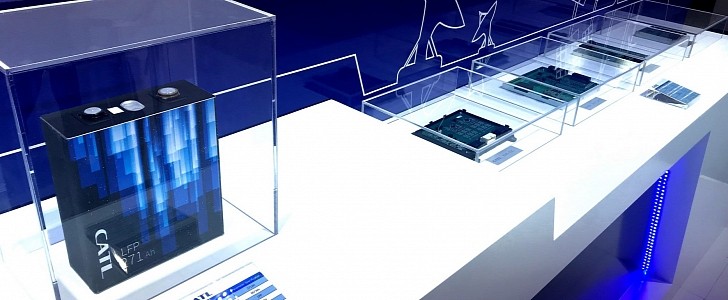When CATL first signed a deal with Tesla, it seemed the American EV maker just wanted access to LFP (lithium phosphate iron) batteries, but that it would not need them for too long: the contract would last only up to June 2022.
On Tesla Battery Day, it was already evident that LFP cells would play a major role in its strategy: its affordable, high-volume EV will use them. It was only natural that the deal with CATL would be extended. On June 28, it was: until December 2025.
CATL released the information to the Chinese stock market, and it was published on the CNInfo website. Sadly, it does not mention quantities, chemistries of form factors Tesla will buy from CATL over these years. Although LFP cells will undoubtedly represent the larger volumes, it would not be strange if Tesla bought 2170 or even 4680 ternary cells – which use nickel, cobalt, and manganese in their cathodes.
Apart from ensuring a steady supply, the new deal with Tesla would also help the company launch a Model Y with LFP cells, according to CNEVPost. If that really happens, it will be a completely different approach from that Tesla has adopted in the US with its electric crossover.
For the American market, Tesla has killed the Model Y Standard Range Plus because it would have a low range even with 2170 cells. Considering that LFP batteries have a lower energy density than NCA (nickel-cobalt-aluminum), a Model Y with them would run even less than the Model Y that Tesla decided not to sell to its American customers.
That said, either the EV maker has a secret plan to offer a more extended range with LFP cells (eventually offering a larger battery pack), or it believes Chinese customers will not care if they can drive less than the ones in the US. Car buyers in China are considered way more demanding than their American equivalents, making the first hypothesis more likely to apply.
CATL released the information to the Chinese stock market, and it was published on the CNInfo website. Sadly, it does not mention quantities, chemistries of form factors Tesla will buy from CATL over these years. Although LFP cells will undoubtedly represent the larger volumes, it would not be strange if Tesla bought 2170 or even 4680 ternary cells – which use nickel, cobalt, and manganese in their cathodes.
Apart from ensuring a steady supply, the new deal with Tesla would also help the company launch a Model Y with LFP cells, according to CNEVPost. If that really happens, it will be a completely different approach from that Tesla has adopted in the US with its electric crossover.
For the American market, Tesla has killed the Model Y Standard Range Plus because it would have a low range even with 2170 cells. Considering that LFP batteries have a lower energy density than NCA (nickel-cobalt-aluminum), a Model Y with them would run even less than the Model Y that Tesla decided not to sell to its American customers.
That said, either the EV maker has a secret plan to offer a more extended range with LFP cells (eventually offering a larger battery pack), or it believes Chinese customers will not care if they can drive less than the ones in the US. Car buyers in China are considered way more demanding than their American equivalents, making the first hypothesis more likely to apply.








